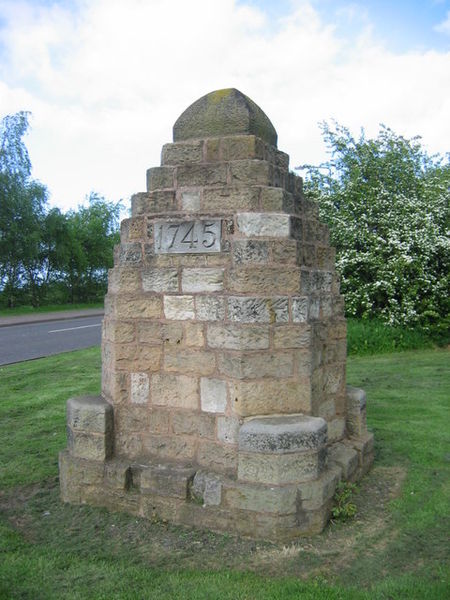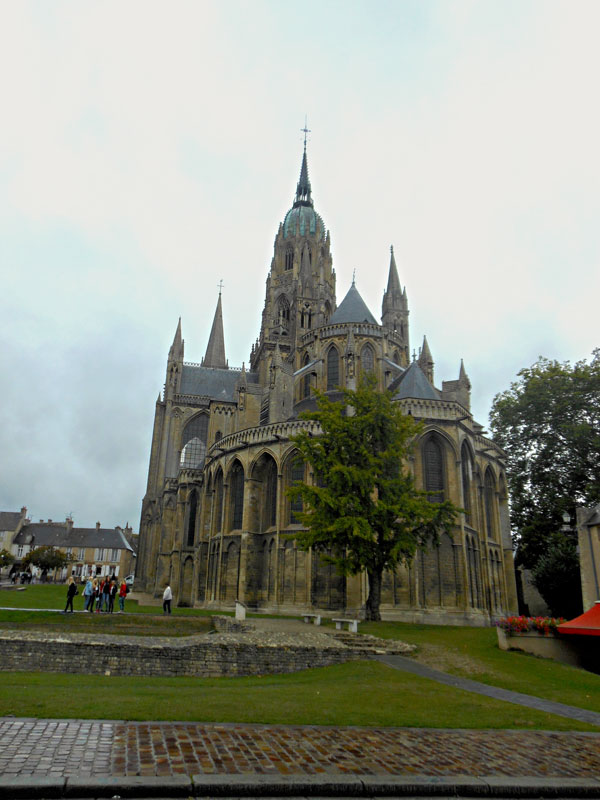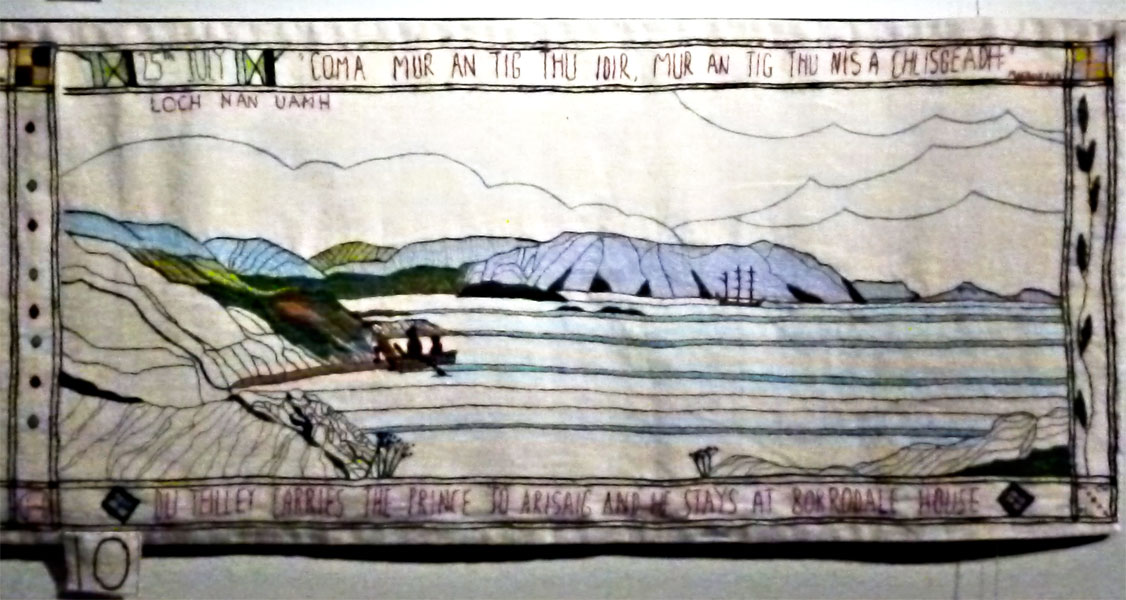‘The Embroidery’ by Franz Xaver Simm (1853-1918)
Le tambour bat son plein* !
…………………………
Hi everybody !
So, after the unveiling of The Prestonpans Tapestry in 2010, and of The Great Tapestry of Scotland in September 2013, at the Scottish Parliament,
http://youtu.be/LvWo_6JIYAA
The Scottish Diaspora Tapestry, a new artistic chef-d’oeuvre is now in the hands of a team of talented embroiderers working hard on their ‘tambours’ to complete it before the next Homecoming Scotland celebrations in 2014. ‘The Tapestry when completed, the Cabinet Secretary underlines, will form part of the Homecoming Scotland celebrations next Year. Homecoming 2014 will position Scotland on the international stage as a dynamic and creative country with a rich history and culture…‘
Many thanks to Janice for having drawn our attention to this unique work of art which will pay homage to so many Scots and descendants of Scots dispersed all over the world and still deeply attached to their mother country.Did you know, for example, that about 40 millions Americans had Scottish roots? The Scottish Diaspora Tapestry has already brought together volunteers from 25 countries to create a tapestry which will depict the adventures of Scottish immigrants over the centuries. The work began in 2012 and it should be completed in 2014.
On our last journey to Scotland, we just missed the Prestonpans Tapestry when it had been displayed in Edinburgh at St Mary’s Church, so we wouldn’t have missed it for the world while it was displayed in France in the very building of the famous Bayeux Tapestry.
“It must have been so impressive”, writes Janice ” to view the 104 meters wide embroidered panels celebrating the journey of 25 year old Bonnie Prince Charlie from France then through the Scottish Highlands to victory at Prestonpans in 1745.” Now that we’ve been able to admire this magnificent work of art I can say YES, it is very impressive and we love it very much.
The famous battle of Prestonpans took place on 21st September 1745. To us, the date may seem very far back in time but it is NOT and what happened yesterday still has consequences today…
The Battle of Prestonpans was the first significant conflict in the Jacobite Rising of 1745. The battle took place at 4 am on 21 September 1745. The Jacobite army loyal to James Francis Edward Stuart and led by his son Charles Edward Stuart defeated the government army loyal to the Hanoverian George II led by Sir John Cope. The inexperienced government troops were outflanked and broke in the face of a highland charge. The victory was a huge morale boost for the Jacobites, and a heavily mythologized version of the story entered art and legend.
It was initially known as the Battle of Gladsmuir, but was actually fought at Prestonpans, East Lothian, Scotland, on that town’s borders with Tranent, Cockenzie and Port Seton.
http://en.wikipedia.org/wiki/Battle_of_Prestonpans
Our day at Bayeux began in Hotel Ibis Budget, a good-value hotel which we highly recommend for its warm welcome, the quality of the services, free wi-fi and a good breakfast (rustic bread, fresh fruit salad, expresso coffee…). You can also get a discount at the nearby restaurant ‘Courtepaille’.
We arrived there at the end of a rainy day, in the week following the ‘Journées du Patrimoine’ which had attracted crowds of visitors to the Museum. We just missed the Scottish-French festivities which had inaugurated the Prestonpans Tapestry exhibition.
The cathedral is not far from the Tapestry Museum. We did not have time to enter it for we wanted to go and visit William the Conqueror’s castle in Falaise. It was also kind of pilgrimage for us to go there for our daughter was born in the hospital which is situated just across the huge fortress. 😉
Coup de coeur for ‘Le Moulin de la Galette’,
After taking a couple of pictures of the very nice ‘Moulin de la Galette’ (a creperie today) we entered the Bayeux Tapestry Museum which is just a step away. Given the crowds of tourists who soon followed us, it was a very good plan to arrive early this morning!
We had been looking forward for a long time to see the famous Queen Mathilde tapestry and we were not disappointed of our visit to the dark room which shelters it though we would have liked to stay longer in front of this masterpiece, to be able to examine the little details (animals in particular).
But we’d rather hurry on towards the upper floor where the Prestonpans tapestry was displayed for crowds of people were already queueing at the entrance of the Museum.
With its 104 panels, the Prestonpans is the longest tapestry in the world. So, let us begin with the beginning today for I will need more than one article to tell its story…
Sorry for our English-speaking readers (most of you probably) but I’ve just found a French version of this marvellous DVD’s extract! But the panels are sub-titled 😉
“A new Scottish treasure to be enjoyed in perpetuity”
“A truly significant artwork for the Scottish nation
and a wonderful example of the embroiderer’s skill”“It merits a wonderfully designed special building to house it.”
The tapestry is the latest initiative of the Battle of Prestonpans (1745) Heritage Trust. Set up in 2006 to campaign for the proper recognition of this defining period of Scotland’s history, the Battle Trust has worked tirelessly to secure its place in the nation’s consciousness. This battle deserves to be remembered and interpreted.
Inspiration for the Prestonpans Tapestry came from the Trust’s founding chairman, Dr Gordon Prestoungrange. Having visited the Bayeux tapestry, he thought something similar could be created in Prestonpans – and so began this remarkable community art project.
Initially meant to be just 70 metres long, the project took on a momentum of its own and embroiderers from all over Scotland volunteered to take part. Artis Andrew Crummy designed another 34 panels to accommodate them and their ideas for additional scenes in the story.
…………
When it was completed in the summer of 2010, it embarked on a tour of the Highlands and islands, in the footsteps of the Prince himself, to the communities of the many volunteers.
(‘Help create a home for the magnificent Battle of Prestonpans Tapestry’ brochure edited by the Battle of Prestonpans Trust)
Below is the link to the Battle of Prestonpans tapestry. Here you can learn, in English and in French, everything you want to know about this magnificent tapestry and many very interesting articles from the very beginnings of the work to the last news of its journey in Scotland and France.
http://www.prestonpanstapestry.org/tapestry/default.aspx
For the Museum it must have been a challenge to display such a big tapestry, longer than the Bayeux Tapestry itself. The choice of displaying it in three rows was not so bad for it composed a beautiful mosaic but we look forward to seeing it displayed lengthwise from number 1 panel to number 104, when it will be sheltered in its own rounded building near Prestonpans..
Every audience has been amazed at the detail contained in each panel – both in its stitching and in historical content.
(‘Help create a home for the magnificent Battle of Prestonpans Tapestry’ brochure edited by the Battle of Prestonpans Trust)
The drawings and lettering of the tapestry are embroidered with colourful yarns and in a naive and very lively style expressing the different artistic sensibilities while keeping its unity. Like the Bayeux Tapestry it reads like a ‘bande dessinée’ ( comic book) and it is so interesting that there is no doubt that this great page of Scottish history will stay in our memories forever. Wasn’t it the aim?
So, the story begins…
In 1744, after the French King has promised to help him regain the throne for the Catholic Stuarts (the Jacobites) Bonnie Prince Charlie leaves his father, James VIII of Scotland, in Rome where he had spent his childhood and he sets off for France with the aim to sail to Scotland.
A violent tempest destroys the allied French armada but Bonnie Prince Charlie decides to go on alone. On 22nd June 1745 he finally embarks from Saint Nazaire aboard L’Elisabeth and the DuTeillay with weapons, supplies, and 700 French soldiers. But the HMS Lion intercepts the ships and after a long and hard fight only the Du Teillay can go on to Scotland.
On 23rd July and after sailing on in stormy seas Bonnie Prince Charlie, now unrecognizable under his beard and disguise, lands at Eriskay, in the Outer Hebrides, on a nice little beach now known as the Prince’s cockleshell …
but he is not welcome there…MacDonald of Boisdale begs him to go home and the Prince replies ‘I am come home’…
So he set sails again, this time landing near Arisaig, on the west coast of the Scottish Highlands.
If you happen to travel in Normandy and to be in Bayeux before the tapestry resume its journey, don’t miss a visit to the two sister-tapestries! They’re fabulous and the Museum shelters many other treasures (maquettes of the life at the time of William the Conqueror – mini chefs-d’oeuvre .)
Bonne lecture!
A bientôt.
Stay tuned for the following episodes on the story of the Prestonspans Tapestry 🙂
Mairiuna.
………………………….
* ‘le tambour bat son plein’ means here that the tapestry work is at its height (to celebrate Scotland and Scottish people) – ‘jeu de mot’ between the musical instrument with its festive and war connotations (French tambour = drum) and the embroiderer’s ‘tambour’ which is the wooden circle used by the embroiderer to stretch the material.














Leave a Reply